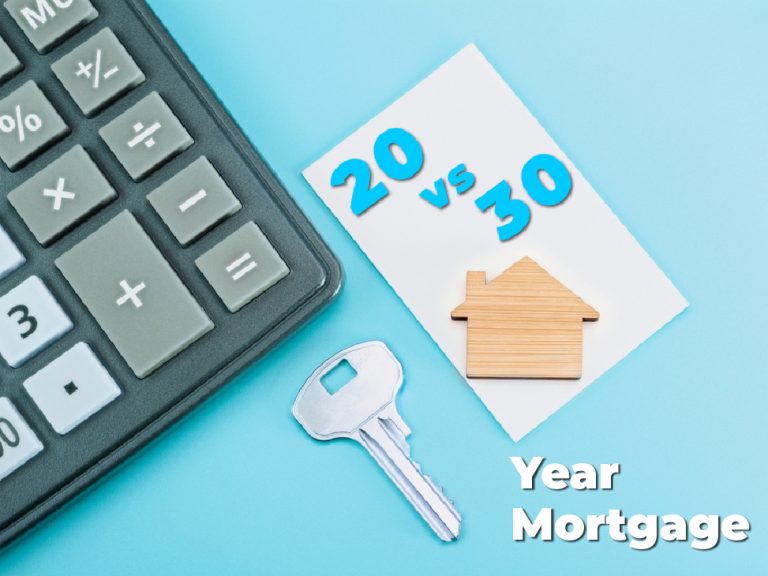Getting home loan is very BASIC now
Get a loan in under 5 mins

Buying a home is a significant milestone, but the choices you make during the process can have a lasting impact on your financial future. Among these choices, one of the most crucial is determining the term of your mortgage. The decision to opt for a 20 vs 30 year mortgage is not to be taken lightly. This comprehensive blog will discuss the complexities of these two widely-used mortgage options needed to make an informed decision that aligns with your financial goals and unique circumstances.
Table of Contents
Before we explore the key differences between a 20 year mortgage and a 30 year mortgage, it’s essential to understand the concept of mortgage terms. Simply put, a mortgage term refers to the number of years over which you agree to repay your home loan. While there are various mortgage terms available, the 20-year and 30-year options stand out as the most prevalent. These terms play a significant role in determining the duration of your financial commitment, shaping the size of your monthly payments, and influencing your overall financial stability.
Now, let’s take a closer look at the 20-year mortgage option.
Suggested read: Pradhan mantri awas yojana eligibility 2023
Suggested read: Private home loan finance company list
Suggested read: Home loan for bank employees
Suggested read: Subsidy on home loan by government 2023
Suggested read: Top 10 banks for home loans in India
The financial impact of a home loan 20 years vs 30 years, is substantial. A 20-year mortgage may demand higher monthly payments, but it typically costs less in interest over time, resulting in a lower overall expense. For instance, with a ₹50,00,000 loan at an 8% interest rate, the 20-year mortgage would require monthly payments of approximately ₹41,000 and accrue a total cost of around INR 1 Cr. In contrast, a 30-year mortgage with lower monthly payments (about ₹36,000) would accumulate a significantly higher total cost of approximately INR 1.32 Cr. Therefore, while the 20-year mortgage offers financial security and savings in the long run, the 30-year mortgage provides immediate financial flexibility at a higher overall cost. Consider such examples carefully to make a well-informed choice aligned with your financial goals and circumstances.
Choosing between a 20-year and a 30-year mortgage is a big decision. You need to think about what’s best for your finances and your life plans. With a 20-year mortgage, you’ll build up equity faster and pay less in interest over time, but your monthly payments will be higher. On the other hand, a 30-year mortgage gives you lower monthly payments, which can be helpful for your day-to-day budget. But in the long run, you’ll pay more in interest.
To make the right choice, consider your financial stability, what you want to achieve in the long term, how comfortable you are with risks, and other investment opportunities and retirement plans you have.
The choice between a 20-year and a 30-year home loan depends on your financial goals and circumstances. A 20-year loan typically offers lower interest costs and faster equity buildup but comes with higher monthly payments. A 30-year loan offers lower monthly payments but results in higher overall interest expenses.
A 30-year mortgage can be advantageous if you need lower monthly payments, providing more financial flexibility. This is helpful for budgeting and managing day-to-day expenses. However, it’s essential to note that a 30-year mortgage generally results in higher overall interest costs compared to shorter-term options.
There isn’t a specific age that is universally considered the best for taking out a mortgage. It depends on your circumstances and financial goals. Many people consider homeownership in their late 20s to early 40s when they have stable incomes and are ready for the long-term commitment of a mortgage.
Yes, you can get a home loan after 40 years. Lenders typically consider factors like your income, creditworthiness, and the loan’s repayment period rather than your age. However, it’s essential to plan your mortgage to ensure you can comfortably meet the repayment obligations, especially if you’re nearing retirement age.
Mortgage interest rates can vary depending on market conditions and the lender. Generally, shorter-term loans like 15 or 20 years tend to have lower interest rates compared to longer-term loans like 30 years. However, the specific rates you qualify for will depend on your credit score, financial history, and prevailing market conditions.
Longer-duration home loans, like 30-year mortgages, can be better for some borrowers because they offer lower monthly payments, making homeownership more accessible. However, they result in higher overall interest costs over the life of the loan. It’s a trade-off between immediate affordability and long-term savings.
Age itself does not typically influence mortgage interest rates. Lenders primarily consider factors such as credit score, income, loan amount, and loan-to-value ratio when determining interest rates. However, your age can indirectly impact your ability to qualify for a mortgage if it affects your income or retirement plans.
Age Limit for Salaried Individuals: 21 to 65 years. Lenders generally consider the borrower’s age and retirement age to assess loan eligibility. While some lenders may have specific age limits, many provide loans to individuals beyond traditional retirement ages, as long as they meet the financial criteria. It’s advisable to check with lenders for their specific age-related policies.
Published on 25th September 2023